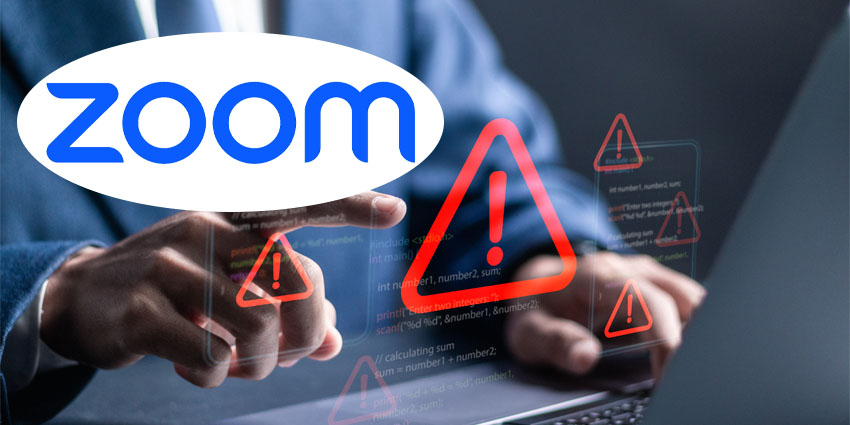A recent phishing attack targeting a crypto investor, disguised as a Zoom download page, resulted in the loss of their entire digital wallet. While the incident comes from the crypto space, it highlights a broader risk: how easily trusted communication tools can become entry points for cyber threats. The takeaway applies across industries, particularly for organizations using VoIP and UCaaS platforms where digital trust is critical.
What Happened?
Ian Unsworth, an investor at Hypersphere Ventures, fell victim to a phishing scam that tricked him into downloading malware from a fraudulent Zoom installer. This malicious file gave hackers access to his password manager, which ultimately led to the theft of approximately $100,000 worth of crypto assets. The scam was subtle, targeted, and executed with surgical precision, a stark reminder of how convincing modern phishing techniques have become.
The fraudulent download page was visually indistinguishable from Zoom’s official site. Once Unsworth entered his credentials and downloaded the file, the malware granted the attackers full visibility into his stored passwords. The worst part? The breach wasn’t detected until it was too late.
Why This Matters to UCaaS Users
At first glance, this might seem like a crypto-specific incident. But consider this: Zoom is a widely used communication platform that forms part of many UCaaS stacks. If a bad actor can convincingly spoof Zoom, what’s stopping them from mimicking other VoIP tools like Microsoft Teams, RingCentral, 8×8, or Webex?
For UCaaS users, especially small and mid-sized businesses without dedicated cybersecurity resources, this attack exposes several key vulnerabilities:
- Impersonation of Trusted Tools
Employees regularly install or update communication tools without verifying sources. A single lapse in caution can compromise a whole organization.
- Credential Harvesting via Communication Apps
With many UCaaS platforms integrating with CRMs, document management tools, and internal chat, compromising one app can give hackers lateral access to vast swaths of company data.
- Password Manager Access
The breach occurred through access to a password manager. Many businesses encourage use of password managers for security but this highlights that they are also high-value targets. If your UCaaS login credentials are stored there, they’re at risk too.
Operational Impact on Businesses
An attack like this can have a domino effect on operations:
- Downtime: If your communication tools are compromised, internal coordination halts.
- Data Breach: Access to UCaaS platforms can expose client communications, sales data, call recordings, and confidential documents.
- Financial Loss: Beyond reputational damage, there’s potential for direct monetary loss through wire fraud or ransom.
- Compliance Risk: For regulated industries (e.g., healthcare or finance), such a breach could also mean violations of HIPAA, FINRA, or GDPR regulations.
5 – Steps UCaaS-Enabled Businesses Should Take Immediately
- Download Software Only from Official Sources
Ensure employees understand the importance of downloading software directly from vendor websites or trusted app stores. Bookmark official UCaaS download links in company onboarding materials.
- Use MFA Everywhere
Enable multi-factor authentication (MFA) for every UCaaS account, especially for admin or billing portals. Even if credentials are stolen, MFA can block unauthorized access.
- Train Teams on Phishing Recognition
Run regular security awareness training that includes spotting fake download pages, malicious email links, and suspicious calendar invites.
- Secure Your Password Manager
Make sure your password manager is protected by biometric authentication or a hardware key. Avoid auto-fill settings on high-risk applications.
- Monitor VoIP Logs and Access Patterns
Set alerts for unusual login locations, call activity outside business hours, or configuration changes in your UCaaS dashboard.
Final Thoughts
The Hypersphere incident serves as more than a warning for those in crypto—it underscores a broader concern for any organization using cloud-based communication systems. The same platforms that enable seamless collaboration can also expose businesses to significant security risks if misused or exploited.
As communication tools become more tightly woven into day-to-day operations, cybersecurity can’t remain solely the responsibility of IT. Everyone using UCaaS platforms has a role to play in maintaining security.
Double-check download links, question unexpected prompts, and stay informed. Small habits can help prevent major breaches.
Find the original article here.
Stay tuned to Zoom’s UCaaSReview provider profile for more insights and updates on the latest developments.



